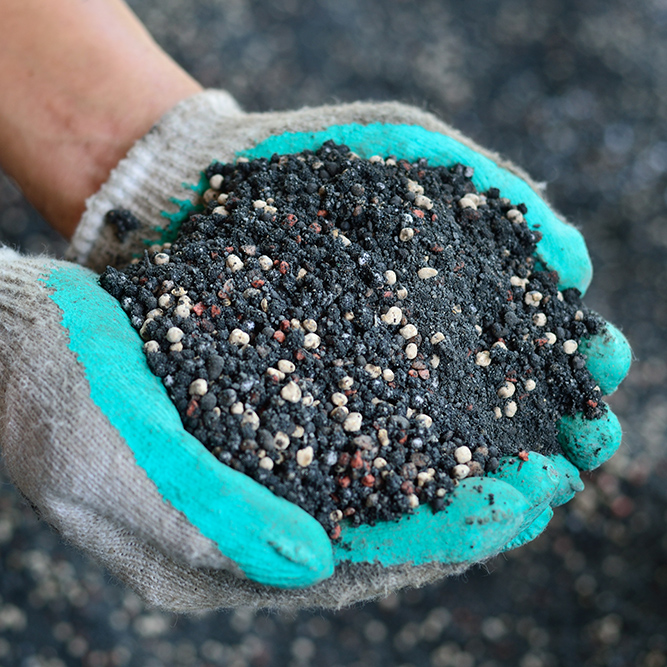Any plant that provides therapeutic relief for the user can benefit from cultivation and agricultural techniques. Newly discovered research and development have allowed the plant-pharmacological industries to grow and prosper in the 20th Century. Take the medical marijuana industry, for example. Scientific methods have propelled the cannabis sector to new heights, and kratom alkaloids are no different. In the past few decades, the industry gave birth to a multitude of new marijuana varieties.
There are well over 700 different varieties of cannabis that are named and recognized in the industry. However, there are only three different strains of weed. Those three strains are Cannabis sativa, Cannabis indica, and Cannabis ruderalis. But lots of cannabis consumers still believe that each of those varieties is a different strain of weed. And the same can be said for kratom consumers that purchase different variations of kratom, too. Even most kratom vendors call them strains.
However, science proves that only one kratom strain exists in nature. And every kratom variety on the market has different tastes and appearances from the drying and fermentation process performed by the farmer. But perhaps it’s possible to discover new kratom alkaloids like the cannabis plants.
A cannabis cultivator develops variants of weed by tweaking its genetics. In the end, the grower hopes to create a superior breed of cannabis for future harvesting. And the same process is possible for other botanical plants, too. Theoretically, the kratom farmers could perform a similar strategy to create kratom trees that produce a particular concentration of alkaloids and metabolites.
Fertilized Test Groups Produced More Kratom Alkaloids Per Leaf
Researchers have conducted numerous experiments to understand the pharmacology of the kratom leaf. And those results have unleashed lots of evidence to support the alkaloids in kratom have several medicinal properties. Yet, scientists had never probed for evidence into how the environment and farming conditions may alter those compounds. So they decided to perform a test to determine the effects of applying fertilizer to kratom crops. And a recent scientific study suggests that improved cultivation techniques are useful for gaining a return in kratom plant material for production.
The researchers took 68 cuttings from one single mother stock plant for cloning purposes. Using one tree for a source of propagation reduced the potential for genetic variabilities among the plants. Having all the clones come from a single stock provided a clearer constant amongst all the nursery replicates. And that supplied clearer results for the scientists from the test.
Unsurprisingly, the control batch that received no fertilization had the lowest mass of dry leaf product per plant. And each of the fertilized test groups produced an increase in plant mass respectively in line with the amount of fertilizer given. The more fertilizer the test groups received during the experiment, the higher yield the trees generated. The kratom trees given the most generous amounts of fertilizer resulted in a more abundant mass of leaves than the other three test groups. And with greater harvestable biomass of kratom leaves per tree, that gives kratom farmers much more profit potential in the long run.
Researcher Look at Fertilization Effects on Kratom Alkaloids
The two kratom alkaloids that produce the therapeutic benefits kratom consumers seek are mitragynine and 7-hydroxymitragynine. Mitragynine is the most prominent of all the alkaloids in kratom. It accounts for approximately two-thirds of all the alkaloid content in the entire leaf. On the other hand, its relative compound, 7-hydroxymitragynine, remains below the lower limit of quantification in plant matter taken directly off the trees. The reason is 7-hydroxymitragynine develops during an oxidation process, occurring when farmers place the picked leaves in sunlight to get dried before they’re crushed for packaging. So the scientists were more interested in how the fertilization of the kratom trees would affect mitragynine concentration, given that it was available in measurable amounts. But surprisingly, the fertilizer had no apparent influence on any measured amounts of mitragynine recorded.
However, there are more metabolites found in kratom besides the two most heavily studied. Even though the other alkaloids exist in much lower concentrations than mitragynine, they all have medicinal qualities, too. Paynantheine, speciogynine, and mitraphylline are molecular compounds in kratom that produce muscle relaxant attributes for the consumer. Plus, speciociliatine and corynantheidine are opioid agonists. And scientists have suggested that corynoxine may fight against neurodegenerative disorders. So the team of researchers examined how fertilizer would affect those additional alkaloids in the test as well.
They also studied the effects of fertilizer on the trees for plant growth indicators. That’s the primary use of fertilizer on crops. And tree height, width, and trunk growth increased with fertilization.
Fertilization Changes Concentrations of Kratom Alkaloids
The scientists looked at the data to determine if giving kratom trees controlled-released fertilizer produced greater concentrations of the secondary metabolites found in the leaves. And paynantheine concentrations spiked on the last sampling date in the test group that received the highest fertilizer rate. But the speciociliatine concentrations tested had a different outcome near the end of the study. On one of the final days in the test, the results showed an inverse relationship observed between the strength of the compound present and fertilizer rate, meaning a decrease in concentration occurred in the fertilized groups.
Throughout the test, the researchers found no temporal trends in the quantified results. The only readings that suggested correlation were sporadic. So the scientists pooled the data together to increase the statistical significance of the test results. And on average, the fertilizer did have noticeable effects on the concentrations of speciogynine, corynantheidine, and isocorynantheidine. However, the test results do not tie together the density of its alkaloids with an increase of fertilizer, either. For example, speciogynine had greater concentrations in the test group that received moderate fertilization amounts: 43% greater than the control. Corynantheidine and isocorynantheidine both had more substantial results from their lowest fertilized group: 43% and 28% greater than their control groups.
Still, some of the alkaloids in kratom didn’t benefit from the plant receiving any fertilization at all. The paynantheine, speciociliatine, mitraphylline, and corynoxine compounds showed no significant improvement of molecular density compared to the control groups that were not fertilized.
Environmental and Genetic Effects May Create New Kratom Varieties
Like other plants with medicinal properties, it’s advantageous for kratom cultivators to study, learn, and adapt to the agricultural techniques that produce a higher yield of product for marketing purposes. And those procedures also help boost the concentration of molecular compounds that deliver the therapeutic properties that kratom consumers seek. So, all in all, the scientific approach to farming kratom trees works to benefit both sides of the equation for its supply and demand.
However, unlike first-world countries, the nations where kratom grows naturally are still developing. So there are likely quite a few years—if not decades—until those citizens can implement all the scientific techniques of horticultural lineages that are known to promote specific expressions of genetics. Still, the farming communities that have benefited from the demand for kratom are sure to take extra initiatives. They’ll bolster their businesses and evolve as time progresses. And if kratom can remain legal for the long haul in Indonesia, then the kratom agriculture industry will likely become more advanced as the years continue.
Perhaps, in the future, kratom picked from specific farms may have higher concentrations of secondary metabolites in kratom products that consumers take for granted. Some farmers might even develop variants that have a higher percentage of mitragynine. Like the cannabis industry, generating genetic variations of kratom can unlock an extensive commercial enterprise with vast potential.
Who knows? One day, scientific research might progress to where kratom farmers begin splicing together genetics of different species in the Mitragyna genus.






